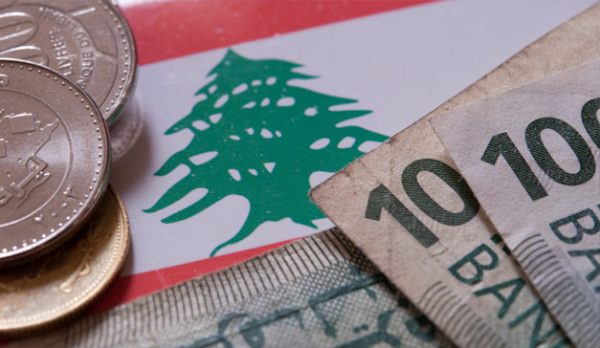A recent video posted on Facebook shows a bank in Lebanon refusing to accept a deposit in Lebanese pounds, asking for dollars instead. The video illustrates the economic uncertainty gripping the country, which is one of the grievances that has led to the mass protests ongoing since October 17.
Bilal Karami, who works as an emergency doctor in a private clinic, streamed the video live on Facebook when he went to a branch of Banque Misr Liban (BML) in the Lebanese city of Tripoli on November 6. The video shows him explaining to the bank employees that he wants to put the equivalent of $330 in Lebanese pounds into his account but the banker refuses to take local currency.
When Karami finishes explaining what he wants to do, a young woman says off-camera, “I’m sorry, but we can’t.”
“But it’s the currency of your country, isn’t it?” Karami challenges her.
The discussion gets heated until finally, the bank managers agree to accept the money. Karami later posted a photo showing that he had, indeed, managed to deposit the Lebanese pounds in the end.

In Lebanon, both the Lebanese pound and the American dollar are used interchangeably in everyday transactions. However, in late October, Lebanese banks shut down for two weeks and ever since they reopened in early November, the fluctuations of the Lebanese currency have had an impact on these everyday operations.
“As soon as I started the Facebook Live, they scurried to do what I was asking”
The FRANCE 24 Observers team spoke to Bilal Karami and asked him why he started live streaming what was happening at the bank.
I have a credit card tied to my account at BML and at the beginning of the month I have to deposit the equivalent of $330 [around 300 euros]. I’ve always paid this in Lebanese pounds, because I get paid in local currency [some Lebanese companies pay their employees in dollars]. But the bank wanted me to make my deposit in USD. I tried to negotiate with them to no avail. However, as soon as I started the Facebook Live, they scurried to do what I was asking.
When I went to the bank, I had already resolved to not let anyone walk all over me because it wasn’t the first time that a bank has refused to take Lebanese pounds from me. It also happened last month. The bank asked me to go and change my Lebanese pounds into USD because they were afraid that the value of the pound would drop after my deposit and they’d lose money.
I went and did it, but I lost money because the rate at the exchange office was 1,800 pounds per dollar while the rate at the bank was 1,530 pounds per dollar. There was no way that I was going to let that happen again.
It’s simple — the banks are going to keep refusing to let us take out money in USD and make deposits in Lebanese pounds until the Lebanese pound has stabilised. They want to protect their USD reserves at our expense.
In this video, staff at Crédit Libanais Bank refused to let a customer withdraw in dollars, claiming that they had run out.
In 1997, the exchange rate was fixed at 1,500 Lebanese pounds per dollar and the value of the Lebanese pound remained relatively stable as consistent foreign investment led to an increase in the country’s USD reserves.
However, since 2011, the balance of payments has been in deficit, meaning that the country has been drawing on dollar reserves as foreign investment in Lebanon has decreased. US sanctions on Iran have had a impact as Iran invested significantly in Lebanon, primarily through financing Hezbollah. The Gulf States have also reduced the level of investment in Lebanon.
Of late, the US dollar has become a rare commodity in Lebanon and the ability of the Lebanese Central Bank to stabilise the Lebanese pound through the dollar has suffered. As a result, the value of the Lebanese pound plummeted this summer. On the parallel market, exchange rates went from 1,507 Lebanese pounds to the dollar to 1,600 Lebanese pounds to the dollar.
Article by Sarra Grira.

Leave a Reply
You must be logged in to post a comment.